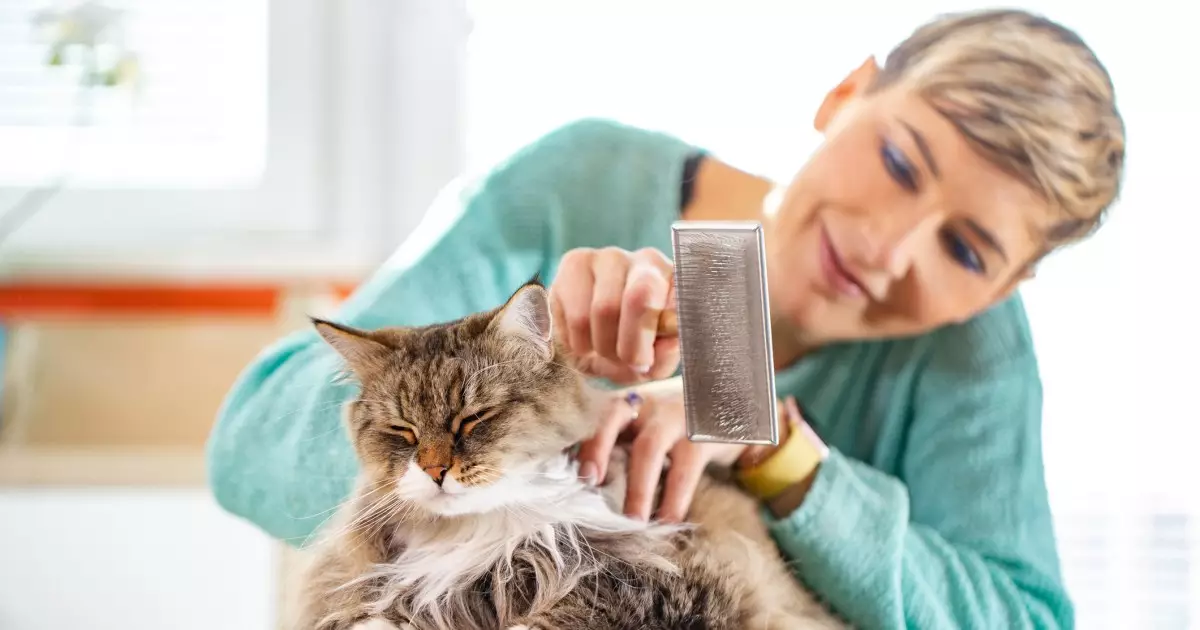Cats are known for their inherent cleanliness, often spending considerable time grooming themselves with their agile tongues and paws. However, this self-sufficient grooming doesn’t absolve cat owners from the responsibility of maintaining their pet’s coat and health through regular grooming. Unfortunately, many cat owners inadvertently make mistakes that can lead to stressful experiences for their beloved pets. This article delves into the common pitfalls in cat grooming and how to create a positive grooming experience for your feline friend.
Introducing grooming to cats at an early age is crucial for establishing a positive routine. If you’ve just welcomed a kitten into your home, it is beneficial to acclimate them to grooming as soon as possible. Kittens are more adaptable and can form positive associations with grooming tools such as brushes and combs. Slowly introduce these tools and complement the experience with treats and gentle praise. This early exposure helps them associate grooming with pleasurable moments and reassures them that it is a safe process.
For those who have adopted older cats, don’t lose hope if you missed the early grooming window. While it’s undoubtedly easier to start with kittens, adult cats can also learn to appreciate grooming. Patience is key. Start slowly, using gentle movements and gradually introducing the brush. With time and positive reinforcement, your adult cat can learn to trust the grooming process.
One of the most significant mistakes owners make is allowing their cats to develop a fearful association with grooming tools. This can happen when grooming is rushed, uncomfortable, or tied to negative experiences. If your cat perceives the brush as a threat, they may become anxious or aggressive during grooming sessions. To avoid fear, make sure those initial grooming experiences are calm and positive. If a cat shows signs of distress, stop and try again later—forcing the issue won’t help.
There’s a widespread misconception that occasional brushing is sufficient for cats, particularly for those with short coats. In reality, regular grooming is essential for both short-haired and long-haired breeds. For short-haired cats, brushing a few times a week can help remove loose hair and reduce the likelihood of furballs. Long-haired cats, however, require daily grooming to prevent mats and tangles. Regular brushing not only keeps their coats healthy but also offers an opportunity for you to check for any fleas, skin irritations, or lumps which may need veterinary attention.
If you discover mats in your cat’s fur, don’t succumb to the temptation of using regular scissors—this can cause injury. Instead, invest in cat-specific clippers designed for safe use on your pet. If the mats are too stubborn or painful to remove, it is wise to consult a veterinarian or a professional groomer.
With the plethora of grooming tools available, selecting the right one can be both confusing and overwhelming. The type of brush you choose should correspond to your cat’s hair length and texture—different breeds have varying grooming needs. A dual-sided brush, for instance, allows for versatility in grooming. For skittish cats, grooming mitts can be a gentle option that allows you to combine brushing with the comforting act of petting. Should you find yourself uncertain about what tools to use, consult a veterinarian or a groomer for tailored advice.
Establishing a comfortable grooming technique is critical. Always groom with the natural direction of your cat’s fur, as brushing against the grain can lead to discomfort and stress. Pay attention to your cat’s body language and start with their favorite spots, such as around the chin and the base of the tail, where they often enjoy being petted.
Furthermore, while nail trimming is an important aspect of grooming, it is essential to stay committed to maintaining this practice. Consistent nail cutting every few weeks will keep your cat’s claws manageable. Alternatively, provide suitable scratching posts around your home to allow your cat the opportunity to keep their nails naturally trimmed.
Grooming your cat should not be a burdensome chore; instead, it can foster a stronger bond between you and your feline companion. By avoiding common mistakes and implementing positive techniques, you create an enjoyable experience for your pet. Be mindful of their comfort, establish a routine, and choose the right tools for a grooming regimen that supports your cat’s health and happiness. Your diligence will undoubtedly contribute to your cat’s overall well-being and strengthen your relationship with your beloved pet.


Leave a Reply